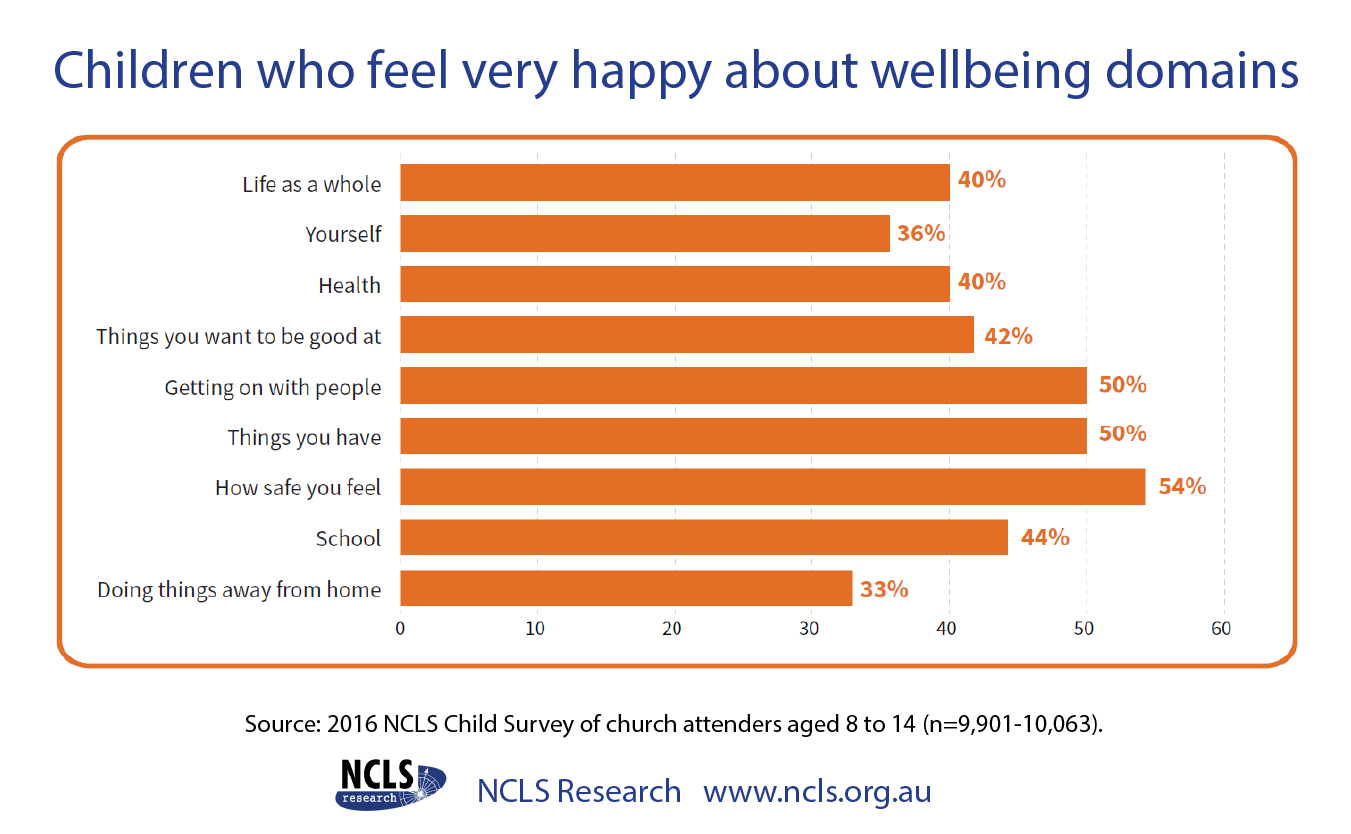How are children who go to church feeling about their inner-world, as well as the one happening all around them?
There’s a lot going on for children: family dynamics, school, friends, church and activities just to name some. In the 2016 NCLS, we surveyed churchgoers aged 8 to 14 across a number of wellbeing indicators to assess where they’re at. The aim was to find out how they were feeling about everyday aspects of life.
In the 2016 NCLS children were asked how happy they were in a number of areas of life. Categories included Life as a whole, Yourself, Health, Things you want to be good at, and Getting on with people.
The table below shows initial results of the proportion of children who claimed to be “very happy” about various domains of wellbeing. However, deeper analysis is required for this part of the 2016 NCLS.

When asked what they were “very happy” about, more than half of children (54%) indicate they are very happy about how safe they feel. Further, just-on half of children indicate they are very happy about getting on with people, and the things they have.
Lower numbers of children appear to be very happy about doing things away from home (33%), and about themselves (36%).
It is worth noting that the highest proportion in the wellbeing indicators who claimed to be sad or very sad was 6%. This percentage was linked to feelings about school.
Positive ratings on life
Local congregations can be buoyed that children taking part in the NCLS are mostly positive about many aspects of their lives. This might also reflect a positive attitude towards church. More information on the views and experiences of children on church life are contained in the article Faith Formation in Children.
Feeling safe
The results show the highest-rated aspect for child church attenders is in how safe they feel. This can continue to affirm the importance of maintaining safe spaces in children’s ministry activities.
Two other areas appearing to be strong in positive assessment, getting along with people and being content with what they have, perhaps show a link to Christian teachings on loving your neighbour and being grateful and content.
The lower-rated aspects might encourage children’s ministry activities to bear little resemblance to school, assisting those whose feelings are negatively impacted by school.
Ministry considerations
Children’s ministry programs might pay attention to the views expressed about self-worth and value, as well as to health and feelings about life in general. Being created in the image of God, being loved by God and being affirmed as a valuable part of God's family may be aspects of the Christian faith that can be used to nurture and strengthen children in these areas.
Ensuring children's church programs are engaging and not like school in its dynamic may also help address those children who express more negative ratings of school. As well, of note is the children who do not feel happy doing things away from home. Churches may consider ways to support families and households to nurture children at home, as they build a stronger sense of security away from home.
Kathy Jacka and Ruth Powell, NCLS Research with Rod Bennett, WildHive Studios.
The faith profile of child church attenders
Positive results overall show that child churchgoers love God and their churches
People of influence in children's faith formation
Parents remain the most significant role modes of faith
Faith formation in children at church and home
Beliefs, identity and faith practices of child churchgoers
How do children feel about their church activities?
Children's evaluation of activities and worship services
Helping child churchgoers use their gifts and skills
Building capacity for mission and empowering children at church
Social networking amongst child churchgoers
How children use technology and online platforms to connect and grow










